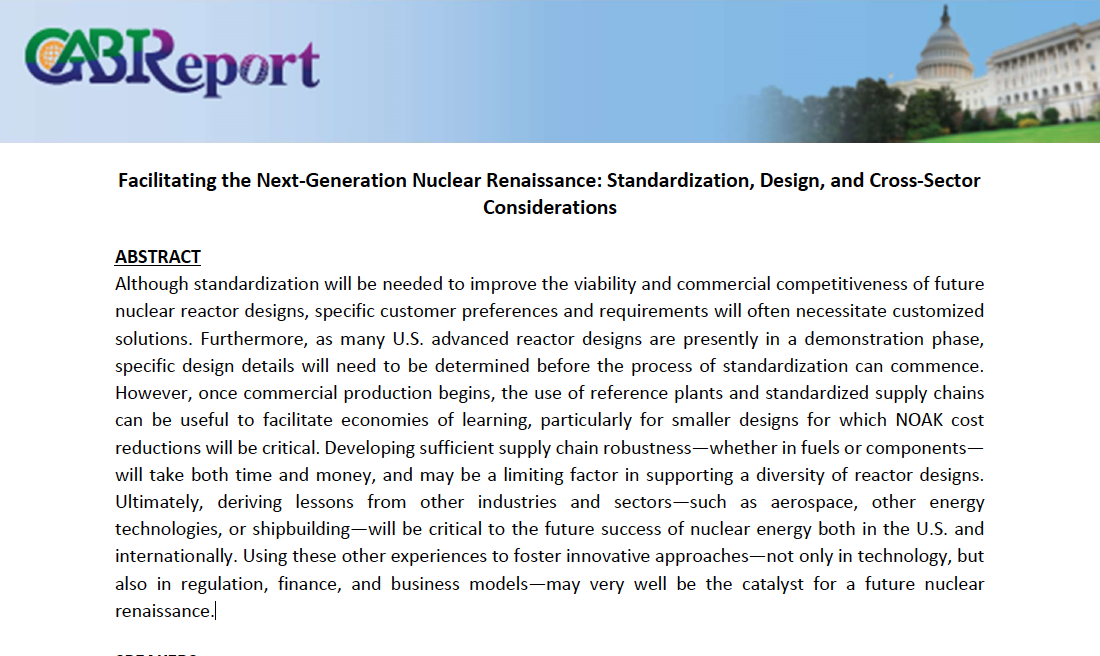Although standardization will be needed to improve the viability and commercial competitiveness of future
nuclear reactor designs, specific customer preferences and requirements will often necessitate customized
solutions. Furthermore, as many U.S. advanced reactor designs are presently in a demonstration phase,
specific design details will need to be determined before the process of standardization can commence.
However, once commercial production begins, the use of reference plants and standardized supply chains
can be useful to facilitate economies of learning, particularly for smaller designs for which NOAK cost
reductions will be critical. Developing sufficient supply chain robustness—whether in fuels or components—
will take both time and money, and may be a limiting factor in supporting a diversity of reactor designs.
Ultimately, deriving lessons from other industries and sectors—such as aerospace, other energy
technologies, or shipbuilding—will be critical to the future success of nuclear energy both in the U.S. and
internationally. Using these other experiences to foster innovative approaches—not only in technology, but
also in regulation, finance, and business models—may very well be the catalyst for a future nuclear
renaissance.







